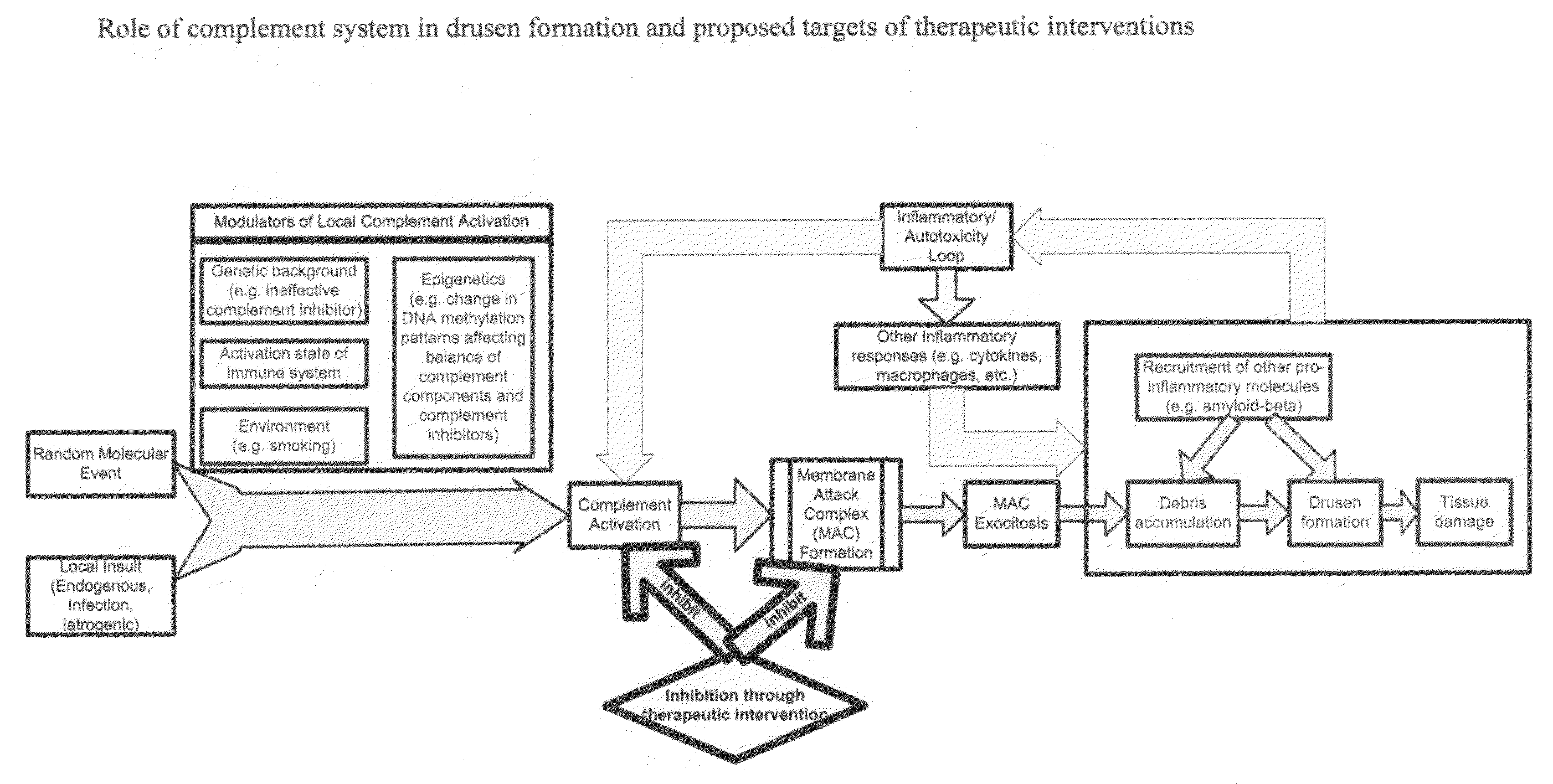Methods of preventing and treating Alzheimer's disease, age related macular degeneration and other diseases involving extra-cellular debris through the inhibition of the complement system
a complement system and anti-alzheimer's technology, applied in the field of prevention and treating alzheimer's disease, age related macular degeneration, other diseases involving the gradual accumulation of extracellular debris, can solve the problems of no known treatment that can stop ad, no effective treatment, limited in its
- Summary
- Abstract
- Description
- Claims
- Application Information
AI Technical Summary
Benefits of technology
Problems solved by technology
Method used
Image
Examples
embodiment
Preferred Embodiment
[0060]A preferred embodiment would be the use of a MAC inhibitor, such as CD59 or CD59-like protein or peptide, as previously proposed in U.S. Pat. No. 5,573,940 with the aim of protecting transplanted organs and cells from cytolysis. Such an inhibitor would be delivered directly to the tissue involved in the disorder, e.g. brain tissue in AD or eye tissue in AMD. The administration would occur in individuals with an early stage of the respective disorder (e.g., diagnosed via imaging of early extra-cellular deposits in the vicinity of the affected tissue, or through the use of antibodies) or in individuals without exhibiting the disease but at higher risk of developing the disease based on risk assessment (e.g., genomic risk factor or biomarker presence). The amount of inhibitory substance would be determined based on the stage of the disease and on the general state of activation of the complement system in the respective individual, or based on dosage determine...
PUM
| Property | Measurement | Unit |
|---|---|---|
| size | aaaaa | aaaaa |
| sizes | aaaaa | aaaaa |
| oxidative stress | aaaaa | aaaaa |
Abstract
Description
Claims
Application Information
 Login to View More
Login to View More - R&D
- Intellectual Property
- Life Sciences
- Materials
- Tech Scout
- Unparalleled Data Quality
- Higher Quality Content
- 60% Fewer Hallucinations
Browse by: Latest US Patents, China's latest patents, Technical Efficacy Thesaurus, Application Domain, Technology Topic, Popular Technical Reports.
© 2025 PatSnap. All rights reserved.Legal|Privacy policy|Modern Slavery Act Transparency Statement|Sitemap|About US| Contact US: help@patsnap.com



